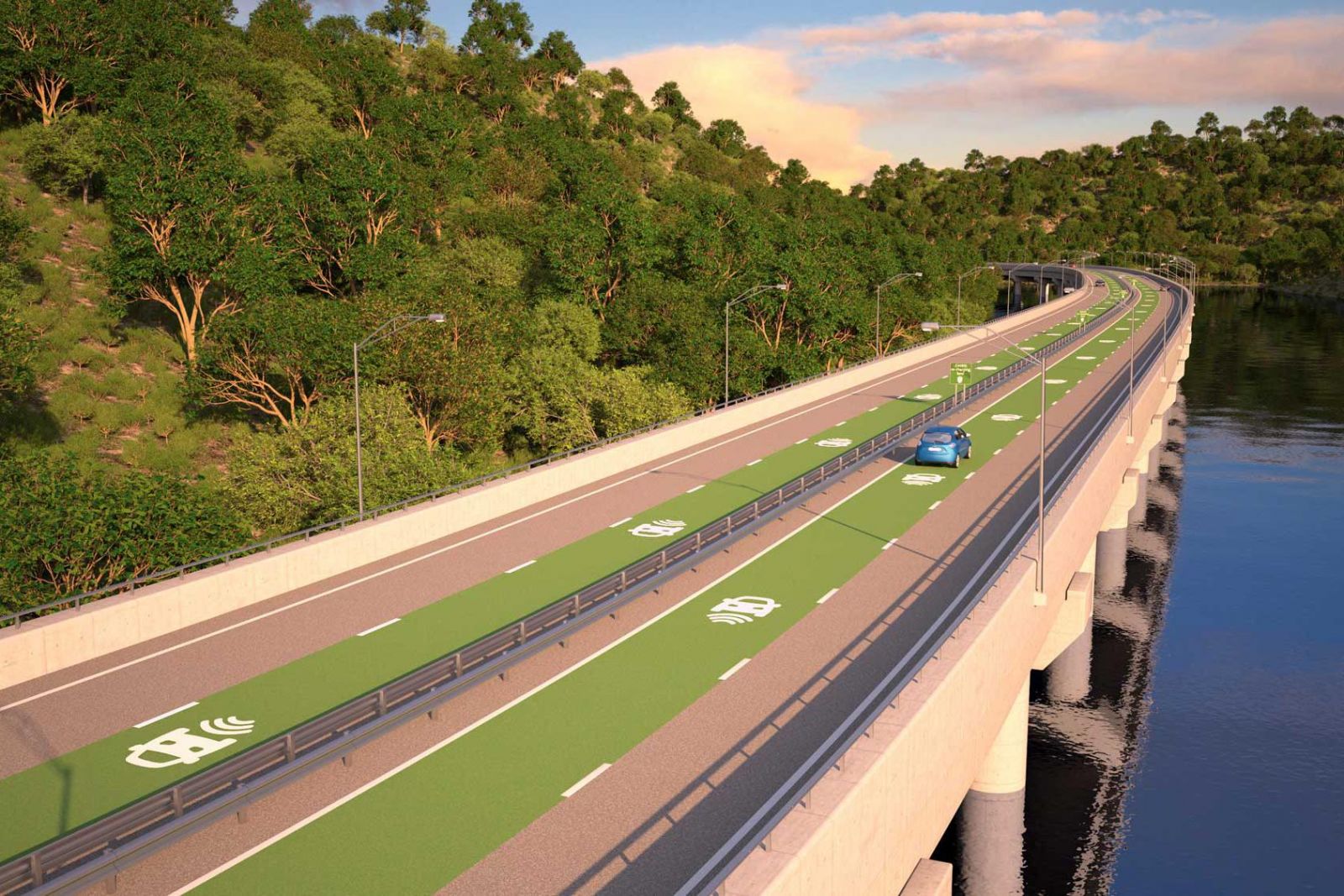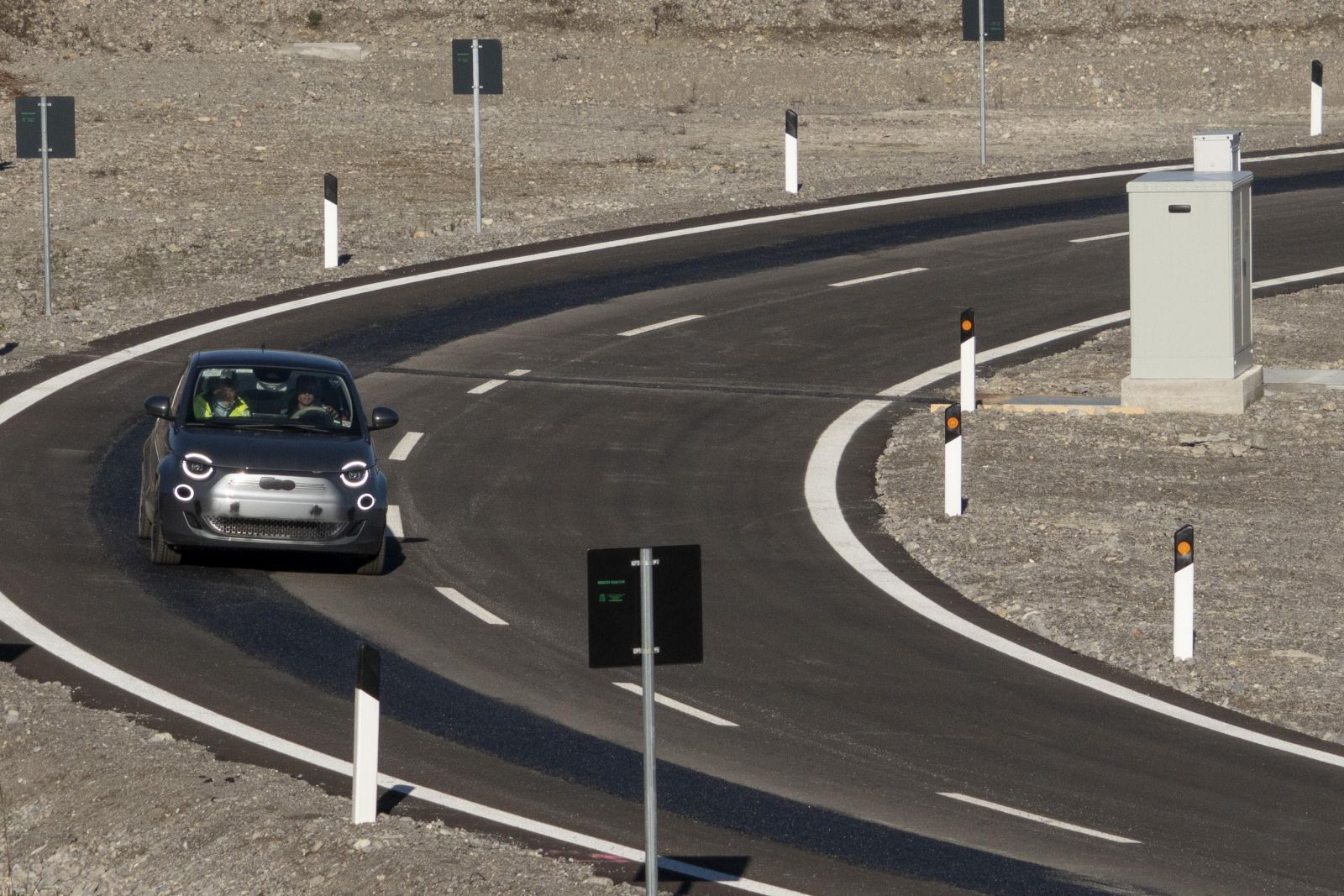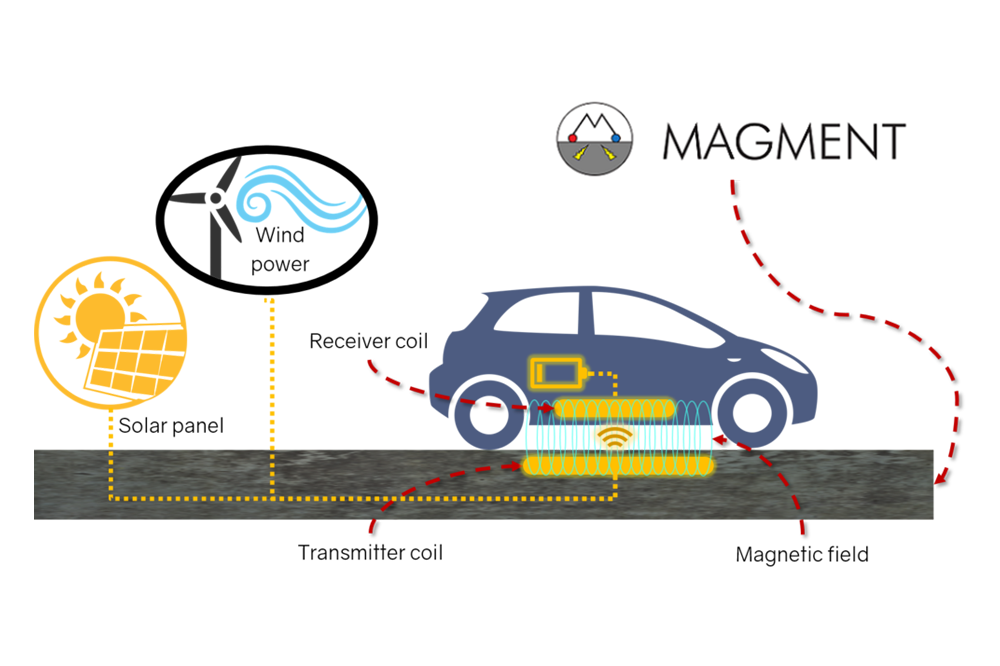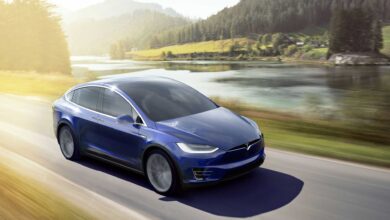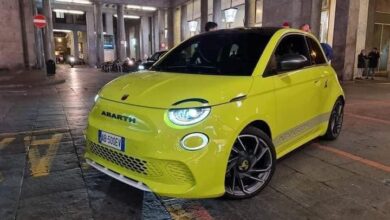Inductive Car Charger: What is it?
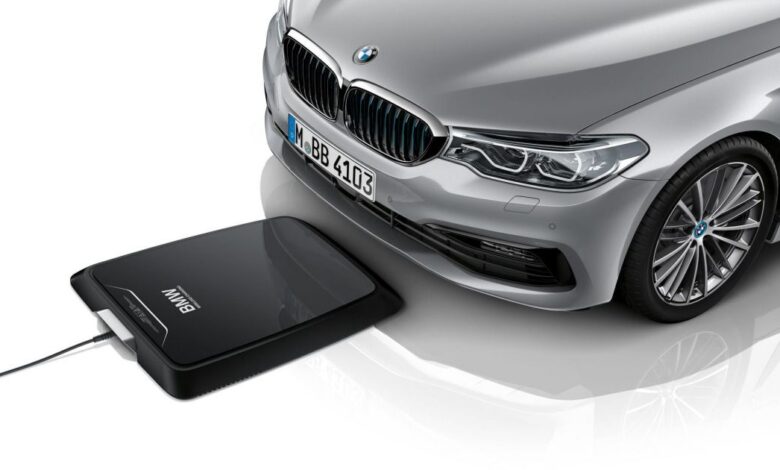
Imagine you’re driving an electric car that can be charged without plugging in, without cables.
You can park at your local mall and your car can automatically start charging as soon as you get out of the car. When you get home, your car can also start charging as soon as you park it in the garage. Maybe your EV doesn’t even need to be charged for extended periods of time at home, since you’ve been driving along the road already charging it.
Wireless charging for electric vehicles promises to make this dream come true. It has the potential to be the ultimate charging technology where drivers can simply leave, lock and charge their EV for an effortless charging experience with ultimate convenience.
Theoretically, wireless EV charging works on a similar basis to inductive charging for smartphones, which typically use the Qi wireless charging standard. An electric current flows through one coil, creating an electromagnetic field that acts on a second coil a short distance away, to produce the corresponding current. This current is then transferred to the car’s battery, charging it.
Currently, the automotive industry is exploring two applications of this scientific principle. This is pad-based wireless charging, and the wireless charging infrastructure is already built into the road.
Pad-based wireless charging (static)
In the same way that wireless smartphone charging requires the user to precisely place their phone on a special pad, inductive charging for electric vehicles requires owners to drive their EV carefully on a pad. specially put on the floor of their garage (or in the future, a parking lot in a multi-storey car park). If at home, the pad is connected via cable to a wall box or other electrical outlet.
The pad-based wireless charging option is currently available in limited numbers, with several automakers testing the technology in certain overseas markets.
BMW is one of these automakers, introducing the technology in its 530e iPerformance PHEV in 2018. The system consists of two components, which is a cushion on the floor of the vehicle (known as the GroundPad in lingo. by BMW) and a charging plate mounted on the underside of the vehicle, called the CarPad.
As the vehicle approaches the GroundPad, its iDrive infotainment system displays a graphic that assists the driver in aligning their vehicle perfectly with the GroundPad.
When aligned, the charging pad is just three inches from the GroundPad, and BMW claims the system has a charging rate of 3.2kW, allowing the car to fully charge the battery in about 3.5 hours. BMW claims that power is transferred with 85% efficiency from the GroundPad to the vehicle.
The company tested the program in Germany and the US (as a 36-month lease) in mid-2019, but since then the program has not been expanded.
Hyundai’s luxury brand, Genesis, is another automaker that is testing wireless charging technology for electric vehicles. In the Korean market, GV60 EVbased on the dedicated E-GMP electric vehicle platform, which can be equipped with a wireless charging solution developed by the US company WiTricity.
Unlike the BMW system described above, the WiTricity system in the newer GV60 can charge at up to 11kW with efficiency between 90 and 93%. Genesis claims that, using wireless charging, the GV60 can be fully charged in as little as six hours, compared to ten hours when the car is connected to a regular wall charger.
Despite these developments, cushion-based wireless charging technology for electric vehicles still has shortcomings that prevent them from being widely adopted. Cost remains an important issue, with these systems often being an additional cost compared to an already expensive conventional wall-box solution.
Efficiency (the amount of energy generated by the ground pad captured by the vehicle) is also an issue, even the 93% efficiency rating, as found on the GV60, does not reach the optimum efficiency rating. when plugged in the Cable.
Line-based wireless charging (dynamic)
Probably the closest technology has ever come to the Mario Kart-style ‘boost’ umbrella, wireless on-road charging aims to charge your electric vehicle as you drive along a regular asphalt road. This technology is in its infancy, even more so than static buffer-based wireless charging.
The road wireless charging system works on the same principle described above, but extends this by burying a series of copper coils just below the asphalt, creating an electromagnetic field along the entire stretch of the road. . A car equipped with a suitable collector will then receive current from the series of coils as it drives and charges the vehicle.
Stellantis is the most recent car manufacturer prove the viability of this technologyby building a 1.05km lap in Italy and then driving the new 500e along it at typical motorway speeds.
The company claims that the vehicle’s battery does not get drained while driving and that the overall system performance is comparable to that of a public DC fast charging station.
Detroit, known as Car City, will be one of the few locations in the world to test the technology on public roads in 2023. The Michigan Department of Transportation has awarded Electreon, a Israeli company, contract to build a miles of road equipped with wireless charging technology that can work whether the vehicle is stationary or in motion.
In West Lafayette, Indiana, the Indiana Department of Transportation is working with Purdue University and German start-up Magment GmbH to develop magnetic concrete that could facilitate the development of public wireless charging lines.
Cost remains a major barrier to widespread adoption of this technology, as any implementation will likely be part of an infrastructure project that requires significant government investment and is likely to is a public-private partnership. That would be difficult to justify when most electric vehicles currently on the road are not properly equipped to take advantage of wireless charging.
In addition, when publicly available, the technology will need to be able to charge everything from small electric vehicles to larger electric vehicles and commercial vehicles, and it is currently uncertain whether the vehicles will have larger batteries. or whether increased energy consumption can be efficiently charged using this infrastructure.
Safety, both in terms of preventing electric shock to passers-by and ensuring there are no adverse health effects from electromagnetic radiation, are also valid concerns.
In its testing, Stellantis claims the electromagnetic radiation generated by the wireless charging line poses no health hazard, and the asphalt acts as an effective insulator to reduce any risk of electric shock.
